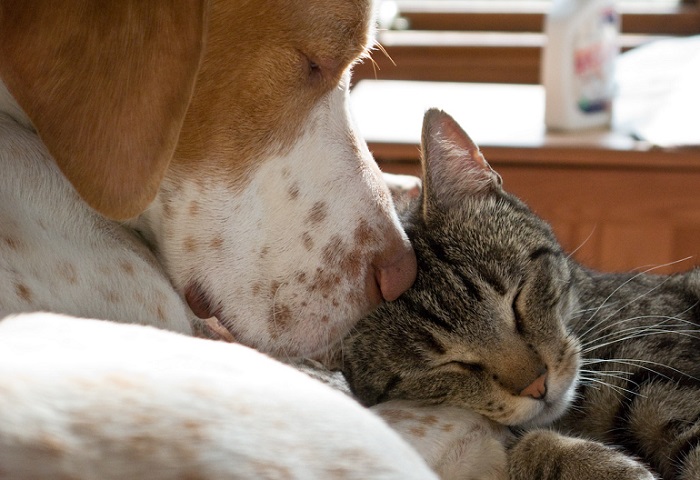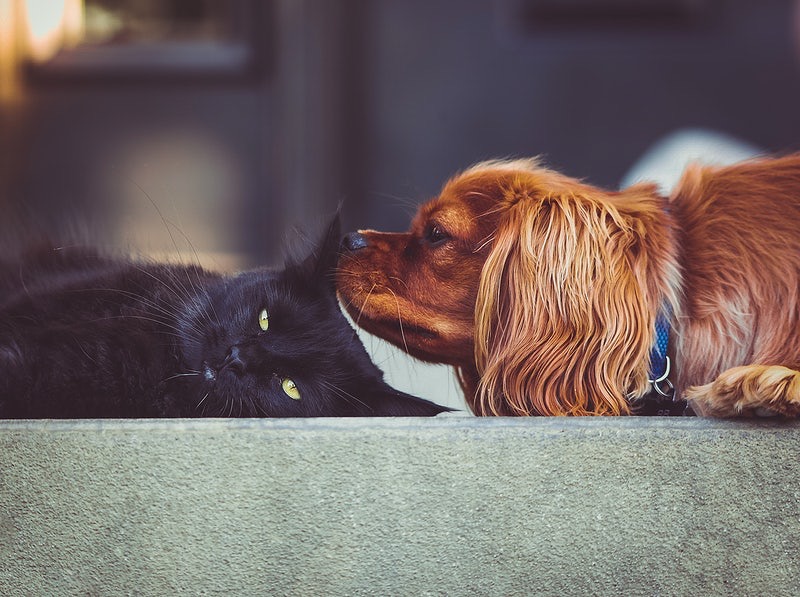In a world where consumerism reigns supreme, it seems no marketing strategy is more irresistible than the adorable allure of our furry friends. From kittens to pups, hamsters to hedgehogs, pets have become the undisputed champions of advertising campaigns. They effortlessly captivate our hearts, compelling us to open our wallets and indulge in the products they so effortlessly promote. But have you ever wondered why exactly pets are chosen time and time again to sell everything from pet food to cleaning supplies? Join us on a whimsical journey as we delve into the enchanting world of furry faces in advertising, exploring the magical powers possessed by these four-legged phenomenons that make us powerless to resist their fluffy charm.
The Growing Trend of Pets in Advertising: Engaging Consumers with Fluffy Faces
In recent years, a delightful and heartwarming trend has taken the advertising world by storm – the use of pets as powerful marketing tools. Gone are the days of solely relying on catchy jingles and flashy visuals to capture consumers’ attention. Now, companies are turning to our furry friends to tug at our heartstrings and forge a deeper connection with their target audience. It’s no secret that pets have an uncanny ability to evoke emotions and bring out our softest, most compassionate side. By featuring these lovable companions in advertisements, companies are not only grabbing our attention but also creating a bond that transcends mere product promotion.
From mischievous kittens to playful puppies to majestic horses, the spectrum of animals showcased in ads has grown exponentially. This diversified range of pets allows advertisers to appeal to different demographics and consumer preferences. **[Company Name]**, a trailblazer in the advertising industry, believes that incorporating pets into their campaigns elicits positive emotions and establishes a lasting brand identity. Such advertising strategies don’t limit themselves to just the domestic front; various wild animals have also become ambassadors for environmental awareness campaigns, promoting conservation efforts, and raising societal consciousness. It’s undoubtedly a win-win approach, as these advertisements not only make us reach for the tissues but also plant seeds of change and inspire us to take action.
- Why are pets so effective in advertising?
- How can companies leverage this trend in their marketing efforts?
- Examples of successful pet-focused campaigns.
- The psychological impact of pet-centric ads.

Unlocking the Power of Emotional Appeal: How Pets Connect with Consumers
When it comes to making a lasting impression on consumers, emotional appeal has the potential to be a game-changer. And what better way to tap into those emotions than through our furry friends? Pets have an uncanny ability to forge powerful connections with humans, intertwining themselves into every aspect of our lives. From heartwarming stories to adorable pictures flooding social media, it’s undeniable that pets hold a special place in our hearts.
So, how exactly do pets connect with consumers on such a deep level? Here are a few reasons why these delightful creatures effortlessly tug at our heartstrings:
- Unconditional Love: Pets offer unwavering love and companionship, providing a sense of comfort and belonging that is hard to replicate elsewhere.
- Relieving Stress: Just being around pets has been proven to lower stress levels, bringing a sense of calm and tranquility to our chaotic lives.
- Source of Happiness: The sheer joy and happiness that pets bring into our lives is unparalleled. Their playful antics and unconditional affection have the power to brighten even the cloudiest of days.
With their ability to evoke a wide range of emotions, pets have become a powerful marketing tool for businesses. Leveraging the emotional bond between consumers and their pets, companies can create captivating campaigns that resonate with their target audience on a personal level. This connection goes beyond simply selling pet-related products; it extends to various industries, as businesses recognize the potential to tap into the emotional side of consumers by incorporating pets into their branding strategies.
Harnessing the Potential: Expert Recommendations for Effective Pet-Centered Advertising Strategies
When it comes to advertising strategies that revolve around our beloved furry companions, the potential is boundless. Drawing on the expertise of industry professionals, we have gathered a collection of recommendations to help you maximize the impact of your pet-centered campaigns:
- Capture Genuine Moments: Authenticity is key when it comes to engaging pet owners. Focus on real interactions and emotions between pets and their owners in your advertisements to ensure relatability.
- Choose Persuasive Visuals: Visual cues play a crucial role in capturing attention. Utilize high-quality images or videos that showcase adorable pets, their unique personalities, and the joy they bring to people’s lives.
- Include Testimonials: Highlight the experiences of satisfied customers who have benefited from your product or service. Genuine testimonials from pet owners can build trust and credibility, fostering brand loyalty.
- Create Interactive Experiences: Encourage pet owners to actively participate in your brand’s campaigns by organizing contests, challenges, or pet-themed events. This boosts engagement, creates brand awareness, and nurtures a sense of community.
By implementing these expert recommendations, you can tap into the vast potential of pet-centered advertising strategies. Remember, pets hold a special place in our hearts and homes, so tailor your message accordingly, and watch your campaigns unleash their full potential!
Key Takeaways
As we wrap up our exploration into the captivating world of pets in advertising, it’s become abundantly clear that these fluffy faces possess an irrevocable charm that irresistibly draws us in. From cute cats and lovable dogs to cheery parrots and mischievous rabbits, we’ve witnessed how these endearing creatures have become the backbone of countless successful ad campaigns.
Through their innocent eyes and contagious enthusiasm, pets have effortlessly carved a unique niche in the advertising industry. It seems that advertisers have recognized the secret power they hold – the ability to evoke emotion and create an instant connection with consumers. Whether it’s a heartwarming tale of companionship or a humorous interaction, these four-legged (or feathered) wonders have proven time and time again that they have what it takes to capture our attention and, ultimately, boost brand recognition.
However, let us not forget that while pets may undeniably enhance the appeal of products, we must approach this phenomenon with caution. We must ensure that advertising ethics are strictly adhered to, safeguarding the welfare and dignity of our furry friends. Their participation should be rooted in responsible practices, prioritizing their safety and well-being above all else.
In this era of oversaturation, pets in advertising continue to thrive, standing as a testament to their enduring popularity. As we scroll through social media feeds or flick through magazines, we find ourselves caught in a whirlwind of fluffy faces, each vying for our attention. But amidst this sea of cuddly companions, it’s important to remember the genuine connection we share with our own pets, unfiltered by advertising motives.
So let us appreciate the charm that pets bring to the advertising world, marvel at their ability to brighten our day, and acknowledge the unique place they hold in our hearts. Whether they’re selling us the latest pet food or simply reminding us of the pure joy that animals bring, these Fluffy Faces will forever have a special spot in the world of advertising, leaving an indelible pawprint on our lives.
Today’s marketing world has embraced an old saying: “A picture is worth a thousand words.” From stunning car commercials and creative websites to clever social media ads, businesses use visuals to capture customer attention and move them to act. One very successful tactic? Putting animals in advertisements, often featuring a cute, furry face.
Incorporating animals into ads conveys powerful messages to the public quickly and effectively. Pets create an instant emotional connection and the warmth and joy they evoke can be used to sell just about any product, from pet food to computers. How many of us haven’t seen a computer advertisement featuring a Labrador happily playing with some device or another?
Animals have been used in advertising for centuries. But modern marketing tactics make the connection even stronger. As part of the social media strategy, many brands now post stunning pictures of their mascot, creating an emotional connection with the followers. The result is more conversation, higher engagement, and promotion of the product or service.
But there are more than just emotional tactics involved; pets have become a strong design element in advertising. Companies can use them to capture attention in any situation, whether it’s a billboard printed with a gorgeous cat, a clever banner featuring an excited dog, or a video of a smiling bunny.
Not everyone enjoys seeing animals in ads, and that’s why businesses need to make sure their pets appear happy and well-treated, not as props or objects. Making sure the animals are properly cared for during the shoots and that the message of the advertisement follows ethical standards is a must.
To sum it up, using pets as a commercial element has proven highly successful. Thanks to their appeal and charm, today’s pets have become a powerful asset to many businesses, helping them to better capture customer attention and create a strong emotional connection with their target audience.





